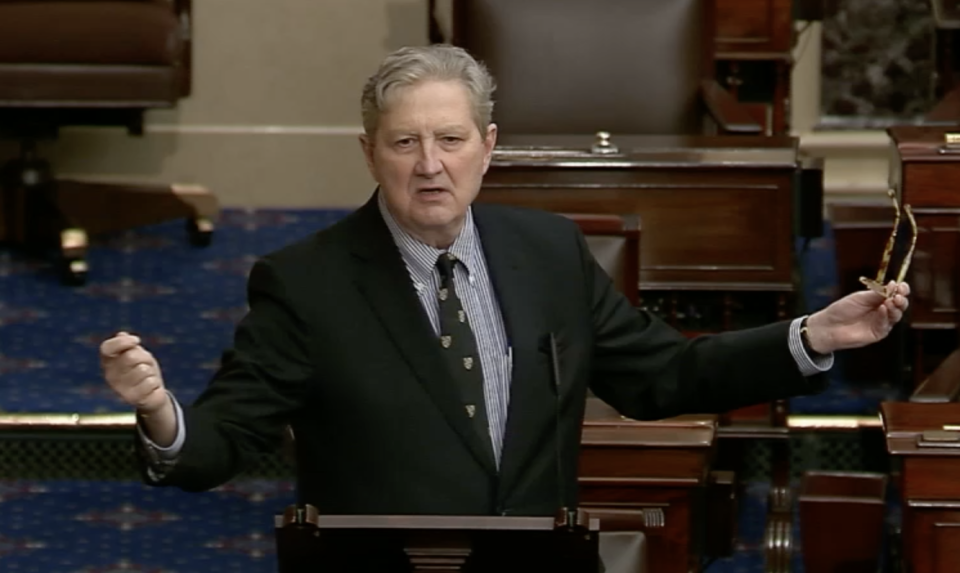Earline Hebert Adams
December 4, 2006
Houma woman nabbed with crack cocaine
December 6, 2006Restless Tri-parish residents dismissed the multi-line-of-defense system proposed by the Coastal Protection and Restoration Authority of Louisiana, saying the plan will follow the same path as others yielding no action.
Board members from the CPRA presented a preliminary draft of protection, which includes levees, locks, freshwater diversion, barrier reconstruction and shoreline stabilization. Over 250 residents attended a two-hour session last Wednesday at the Houma-Terrebonne Civic Center unveiling the plan.
“I’ve heard a lot but little is done, and there are lots of these meetings but still nothing is done,” said Tom Damon, a Lockport resident.
Damon questioned the timeline of “such an ambitious endeavor.” Currently there is no set time frame because what will be officially incorporated into the project will not be decided until after the public assessment.
But once the authority redacts a finalized plan, project manager Jon Porthouse affirmed completion would take 10 to 20 years.
“In that timeframe the plan will be useless. We’ve been riding out saltwater intrusion for 15 years… and that saltwater is what is destroying the whole area. In 10 years we may be saltwater fishing north of Thibodaux,” said Damon.
Many were concerned with the projected timeline as well as components of the draft itself, claiming some areas would not be receiving enough protection, particularly south of the Intercoastal Canal.
Henri Boulet, director of the LA-1 Commission, stressed the importance of providing the maximum amount of protection that can be given to southern parish areas. The commission, dedicated to creating a new, elevated roadway that will protect La. 1 from reoccurring flooding, is concerned with the reduced of levee height in south Lafourche.
Without building maximum protection levees, a shortcoming would be created and allow roadways leading to the elevated highway to flood and recreate the very problem the commission is trying to solve, said Boulet.
Others were concerned about the lacking focus on shoreline ridges, saying the barrier islands are what would keep salt-water intrusion out and freshwater pumped south could then possibly save marshlands.
Damon said his business, Valentine Paper, has been fighting to stay in the game. High chloride levels hold up business and chase costumers away, he said.
“Valentine Paper spends $20 million a year and that turns two or three times in the local community,” said Damon. “We need another saltwater structure and water pumped from Donaldsonville, but there is a lack of political will to do what needs to be done.”
Buddy Cantrelle, of Larose, made an emotional plea to the authority, not for business’s sake, rather concerned about his family.
“What should I tell my child? Pretty soon she is going to ask, should I stay in the 10th Ward or should I move out. Right now I don’t know what to tell her,” he said.
Cantrelle said the state of the Lafourche levee, protecting his family’s home, is good but “it’s not good enough.”
“All I hear about is the cost…it doesn’t matter,” he said. “We’re trying to survive, it’s all about survival and trying not to become extinct.”
Constructive Criticism
With all the criticism, the CPRA remains optimistic and authority member Windell Curole said the successful turnout and cries from the people have heightened understanding of the issues that surround the Tri-parishes.
“Now I think there is a realization of how emotional it is for people, who didn’t even flood, but have watched their wetlands disappear without any action. For experiencing land loss since the ’70s and little work done… I would say people were pretty reserved,” he said.
With the state issuing a comprehensive plan, the authority can take a statewide approach in minimizing land loss and improving the current situation but Curole warns the endeavor will be costly in both time and money.
The history of federal government action in helping Louisiana protect its coastline and resources has proven itself to be unreliable. Curole said that money will make or break the CPRA plan and cannot go without state or federal aid.
“If you want to make some noise go out next week and let [President] Bush and Congress know we need the [outer Continental Shelf] revenues,” said CPRA Chairperson Sidney Coffee. “Without it, we can’t do this.”
Curole said the conventional means of contacting political representation work but contacting friends and family out-of-state may create a stronger voice, one that will move government into action.
“The government gave $8 million dollars to restore the Florida Everglades because Florida has more people. A farmer in Iowa will not be directly affected by the restoration of the everglades without visiting, but if we loose Louisiana’s wetlands, everyone is affected. That farmer’s price of gas, cost of fertilizer, cost of food goes up and is affected without ever seeing the wetlands,” he said.
By showing people around the country the Louisiana’s Gulf Coast may effect their lives, more people can join the fight by calling their representatives, Curole said, further emphasizing to Congress the great need for protection and restoration funding.
“I think people were expressing true frustration. ‘Do we have a future here’ is the question and by the public getting up and voicing their concerns, will save me from having to repeat it and let [the authority] know how real the problem is,” said Curole.
Additional Ways to Learn
A public open house will be held Dec. 11 from 2:30 to 6:30 p.m. at the Houma-Terrebonne Civic Center, giving residents a chance to learn more about the CPRA preliminary draft and give further insight.
“We will take comments from around the state and put them into our final plans. One way or another each person’s concern will be addressed,” said Coffee.
All draft plans and information breaking down the system and the principles behind its creation are available online at www.louisianacoastalplanning.org.












